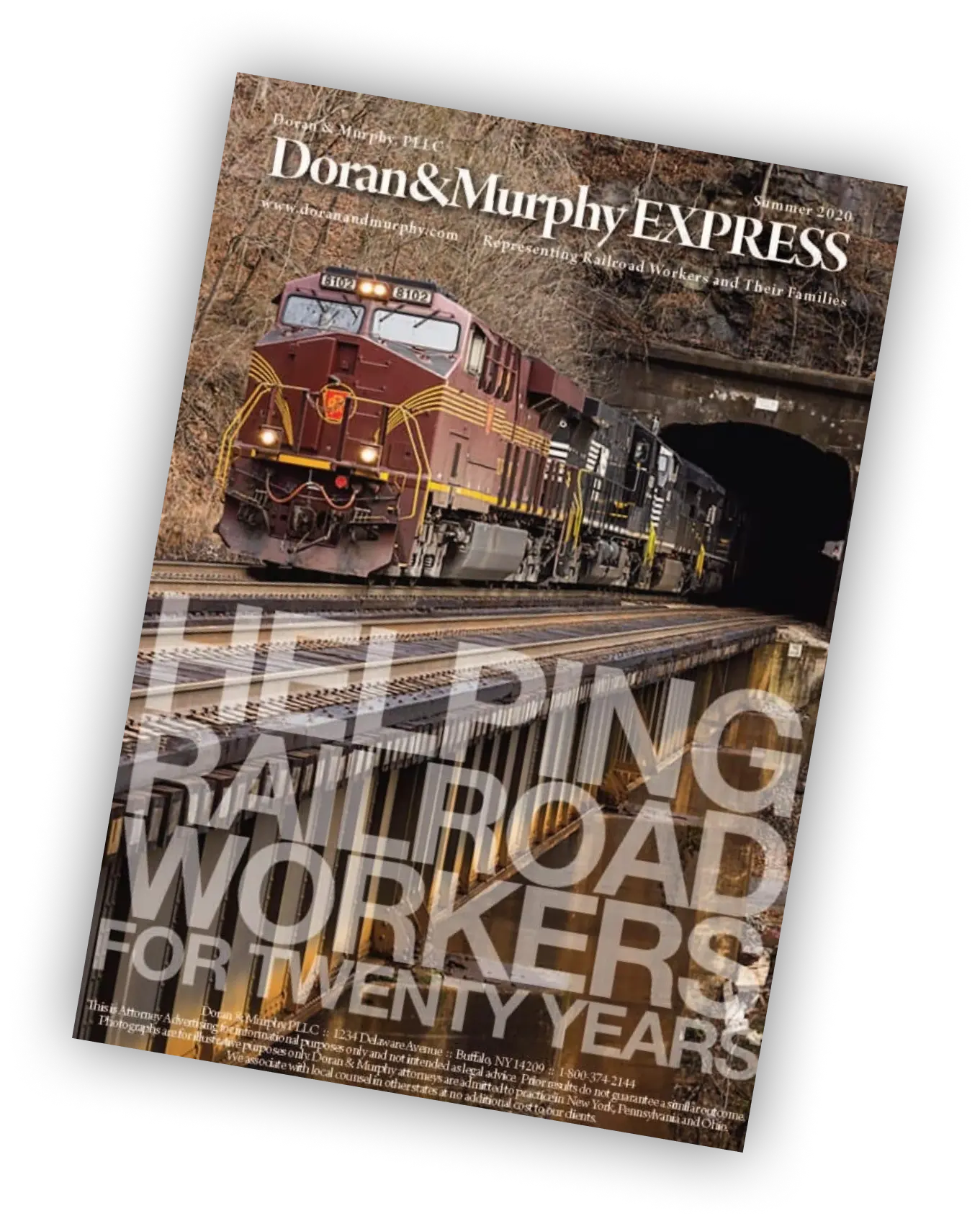
Railroad Retirement Act (RAA) recipients generally receive more than Social Security Act recipients. This holds true for railroad employees with 30 or more years of service. This is due to additional taxes paid by the railroad employer, which other employers do not pay.
Below is a list of questions and answers demonstrating the difference between railroad retirement and social security benefits as of the close of the September 30, 2021, fiscal year.
1) How do the average monthly railroad retirement and social security benefits compare for retired employees and spouses?
According to data from the Railroad Retirement Board (RRB), the average monthly benefits paid to retired employees and their spouses are significantly higher under the railroad retirement system than under social security. The average age annuity paid by the RRB at the end of the fiscal year 2021 to career rail employees was $3,815 a month, while the average for all retired rail employees was $3,045. In comparison, the average age retirement benefit paid under social security was approximately $1,550 a month. Similarly, spouse benefits averaged $1,110 monthly under railroad retirement, compared to $775 under social security. These figures demonstrate that retired rail employees and their spouses receive significantly higher benefits from the RRB than social security.
The RRA also pays supplemental railroad retirement annuities of $23-$43/month to employees that retired directly from the rail industry with 25+ years of service and had railroad service before October 1, 1981.
2) Do recent retirees receive greater benefits than those who retired previously?
Yes, the benefits awarded to recent retirees are generally greater than those payable to those who retired years ago. The average age annuity for career railroad employees retiring in 2021 was about $4,425 monthly. The average monthly benefit for workers retiring at full retirement age under social security was nearly $2,180. If spouse benefits are added, the combined benefit for the employee and spouse totals $6,155 under railroad retirement coverage, compared to $3,270 under social security. Adding a supplemental annuity to the railroad family’s benefit increases the average total benefits for current career rail retirees to about $6,180 a month. Thus, recent retirees receive greater benefits on average than those who retired years ago.
3) What is the current disability benefit amount being awarded?
The average disability benefits awarded to disabled railroad workers retiring directly from the railroad industry in the fiscal year 2021 was $3,325 per month. This is compared to the average award of $1,460 per month for disabled workers under social security. The Railroad Retirement Act and Social Security Act provide benefits to workers who are totally disabled for regular work. However, the RRA also includes disability benefits specifically for employees who are disabled for work in their regular railroad occupation. Employees may be eligible for such an occupational disability annuity at age 60 with ten years of service or at any age with 20 years of service. These benefits can help to ensure that disabled workers maintain a good living standard.
4) Can a railroad worker receive benefits earlier than receiving social security?
Railroad employees can retire earlier than those under social security, but some benefits are reduced. Employees with 30 or more years of creditable railroad service are eligible for regular annuities based on age and service for the entire month when they are 60. Those with less than 30 years of creditable service can retire the first whole month they are at age 62. There is no early retirement reduction if the employee retires after 2001 at age 60 or older with 30 years of service, or if they retired before 2002 at age 62 or older with 30 years of service. Otherwise, early retirement reductions are applied to annuities awarded before the full retirement age. These benefits options give railroad employees some flexibility regarding when they can retire.
5) Can a railroad spouse receive earlier benefits than a social security spouse?
The spouse of a railroader can receive a benefit at an earlier age than the spouse of a worker under social security, but there are some caveats. Namely, the retired railroad employee must have 30 or more years of service and be at age 60 and only then is the spouse eligible for an annuity. By contrast, the spouse of a worker under social security is not eligible for a spousal benefit based on age until both the worker and the spouse are at least 62. However, regardless of age, the spouses of workers under both retirement systems are eligible if the worker is retired and the spouse is caring for a qualifying child. Therefore, while the age requirement is less strict for railroad employees, other qualification requirements must be met before the spouse can receive a benefit.
6) Are there any fundamental differences in railroad benefits compared to social security?
Social security does pay certain types of benefits that are not available under railroad retirement. For example, social security provides children’s benefits when an employee is disabled, retired, or deceased, whereas the RRB only pays children’s benefits if the employee is deceased. However, the RRA includes a special minimum guarantee provision that ensures that railroad families will not receive fewer monthly benefits than they would have if railroad earnings were covered by social security rather than railroad retirement laws. This guarantee is intended to cover situations in which one or more family members would otherwise be eligible for a type of social security benefit that is not payable under the railroad retirement program. In addition, the Social Security Administration pays a supplement to particular disabled Railroad Retirement beneficiaries entitled to a Social Security disability benefit. The supplement equals the difference between the total disability benefits payable under the two programs.
7) What monthly benefits do survivors receive from railroad retirement and social security?
At the end of the fiscal year 2021, the average annuity paid to all aged and disabled widows was $1,890 monthly, compared to $1,415 under social security. Benefits awarded by the RRB in the fiscal year 2021 to aged and disabled widows of railroaders averaged about $2,420 a month, compared to approximately $1,365 under social security. The annuities being paid at the end of the fiscal year 2021 to widowed mothers/fathers averaged $2,050 a month, and children’s annuities averaged $1,235, compared to $1,050 and $920 a month for widowed mothers/fathers and children, respectively, under social security.
In the fiscal year 2021, the average monthly benefit for widowed mothers/fathers under railroad retirement was $2,090, compared to $1,045 for widowed mothers/fathers under social security. The average monthly benefit for children under railroad retirement was $1,590, compared to $930 for children under social security. These benefits are vital for survivors who have lost a breadwinner, and they provide some financial stability during a difficult time. For many families, these benefits make the difference between struggling to get by and making ends meet.
As outlined above, survivor benefits are generally higher if payable by the RRB rather than social security. Railroaders’ benefits are based on their years of service and earnings from working on the railroad. Social Security benefits are based primarily on the worker’s wages covered by Social Security taxes.
8) How do lump-sum death benefits differ between railroad retirement and social security?
Both the railroad retirement and social security systems provide a lump-sum death benefit. The railroad retirement lump-sum benefit is generally payable only if survivor annuities are not immediately due upon an employee’s death. The social security lump-sum benefit may be expected regardless of whether monthly benefits are also due. Both railroad retirement and social security provide a lump-sum use of $255. However, if a railroad employee completed ten years of creditable railroad service before 1975, the average railroad retirement lump-sum benefit is $1,020. Also, if an employee had less than ten years of service but had at least five years of such service after 1995, they would have been required to complete at least one month of service in the year preceding death for the benefit to be payable. If an individual had more than one source of covered earnings, the total social security lump-sum death payment might be higher than $255. For example, if an individual worked for a covered Railroad Retirement employer and had covered work under Social Security, their survivors could receive two separate payments totaling more than $255.
9) How do railroad retirement taxes compare to social security taxes?
Railroad retirement payroll taxes and social security payroll taxes are calculated differently. Social security taxes are calculated on a two-tier basis, with the first tier being 6.2 percent for retirement on earnings up to $147,000 and the second tier being 1.45 percent for Medicare hospital insurance on all earnings. An additional 0.9 percent in Medicare taxes will be withheld from employees on earnings above $200,000. Railroad retirement payroll taxes are only calculated on the first tier, at the same rate as social security taxes, 7.65 percent. In addition, rail employees and employers pay tier II taxes to finance railroad retirement benefit payments over and above social security levels. In 2022, the tier II tax rate on earnings up to $109,200 is 4.9 percent. As a result, railroad retirement payroll taxes are generally higher than social security payroll taxes.
10) If a railroad employee earns $147,000 in 2022, how much is taken out in taxes compared to social security?
For an employee earning $147,000 in 2022, the maximum amount of regular railroad retirement taxes that can be paid is $16,596.30, compared to $11,245.50 under social security. For railroad employers, the maximum annual ordinary retirement taxes on an employee earning $147,000 are $25,550.70, compared to $11,245.50 under social security. Employees earning over $147,000, and their employers, will pay more in retirement taxes than the above amounts because the Medicare hospital insurance tax is applied to all earnings. The Medicare hospital insurance tax is 2.9 percent of all covered revenues for the employee and employer. An employee earning $147,000 in 2022 amounts to an additional $4,233 in railroad retirement taxes, for a total of $20,829.30. The employer would pay an additional $4,233 in taxes for a total of $29,783.70. These other taxes would not apply under social security.





